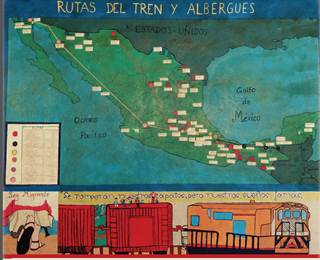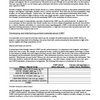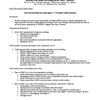The Silence I Carry: Disclosing Gender-Based Violence in Forced Displacement
The Silence I Carry: Disclosing Gender-Based Violence in Forced Displacement
EXECUTIVE SUMMARY
Over half a million displaced people journey north from Central America and through Mexico every year. Many suffer multiple forms of sexual and gender-based violence (SGBV), including rape, transactional sex, forced prostitution, sex trafficking, and sexual assault. Though few reliable statistics exist, different studies estimate that 24% to 80% of women suffer some form of sexual violence en route, along with 5% of men and 50% of gay and transgender individuals. 1 And yet very few survivors report the harm they have suffered.
One key to improving detection of and response to SGBV among refugees and migrants traveling through Central and North America is to better enable survivors to disclose, or reveal, their experiences of SGBV to service providers and others who can help. However, enabling SGBV disclosure in this context is not as simple as it sounds. High levels of mobility and regional insecurity, along with individual, social, and structural factors, can affect a person’s capability, opportunity, and motivation to report this kind of harm. Additionally, it may not always be appropriate for some providers to pursue SGBV disclosure when they have such limited time with fast-moving refugees and migrants or cannot make meaningful referral to additional support services.
At the invitation of UN High Commissioner for Refugees’ Regional Legal Unit (UNHCR - RLU) for the Americas Region, the Sexual Violence Program of the Human Rights Center (HRC) at the University of California, Berkeley, conducted a pilot project to assess challenges and strategies related to SGBV disclosure among refugees and other migrants in Central America and Mexico. HRC focused on Mexico and Guatemala, two countries in which UNHCR has established a Regional Safe Spaces Network (RSSN) of service providers.
This preliminary inquiry addressed two issues: a.) how to strengthen providers’ approach to SGBV disclosure and b.) how to improve awareness raising about SGBV risks and support services. From September 2017 through January 2018, HRC’s Sexual Violence Program conducted desk research, a field mission to Guatemala and Mexico, and data analysis using qualitative coding software. In February 2018, HRC delivered an internal report to UNHCR with preliminary findings, analysis, recommendations, and a dozen draft tools to improve SGBV-related disclosure and outreach for the Central American and Mexican context.
HRC’s preliminary findings clarified how SGBV disclosure requires a multifaceted approach in a complicated context of high mobility, high insecurity, and high diversity of displacement profile, SGBV experience, and survivor identity. Findings also highlighted the need for a context-specific and coordinated communications strategy about SGBV risks and support services in order to reach refugees and other migrants traveling rapidly or far off the beaten path. In response to these results and based on its previous research on SGBV-related interventions, HRC produced several draft tools for UNHCR review and adaptation.
HRC’s draft tools included a typography of SGBV disclosure from a service provision standpoint, along with training modules and sample “do’s and don’ts” for facilitating disclosure in ways that consider providers’ capacity and role with respect to SGBV response. Specific communication tools offer suggestions both for in-person strategies, such as facilitated group discussions and community theater productions, and broader outreach campaigns such as the strategic distribution of printed materials and creative use of public space.









